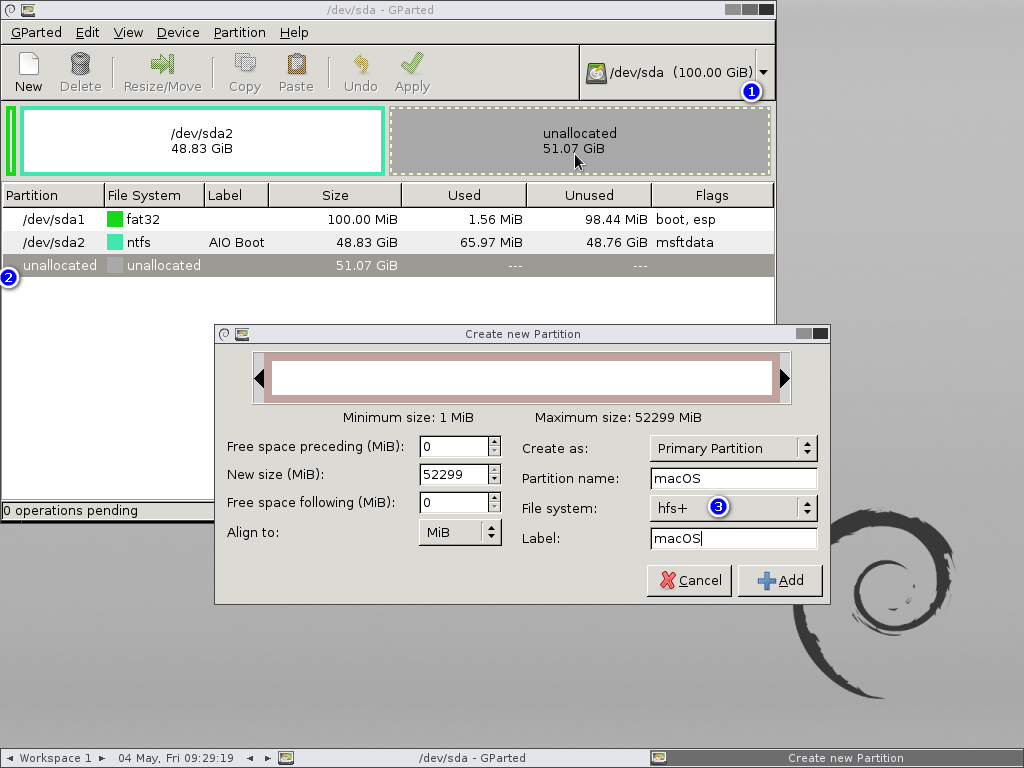
/use-gparted-to-partition-hard-drive-2205693-2-86dc12ea3fc64e0cb5ddd1c1aced3762.png)
- #How to create a gparted live usb software#
- #How to create a gparted live usb iso#
- #How to create a gparted live usb plus#
- #How to create a gparted live usb zip#
For you, LiLi creates portable, bootable and virtualized USB stick running Linux. It will help you in your journey of discovery with Linux.
#How to create a gparted live usb software#
LinuxLive USB Creator is a free and open-source software for Windows.

Mv ~/isodistro/fs/filesystem.squashfs ~/isodistro/iso/live/ LinuxLive USB Creator Powerful yet easy-to-use. Mksquashfs ~/isodistro/fs/squashfs-root/* ~/isodistro/fs/filesystem.squashfs -comp xz
#How to create a gparted live usb iso#
Once the modifications have been made, you will need to pack it all back up, and repack the files into the ISO file. The startup scripts are located within etc/gparted-live/gparted-live.d if you want to modify those. Tada ! We have the root filesystem of GParted. This will create the squashfs-root directory within the fs directory, and if we have a look in there…īin dev etc home initrd.img lib media mnt opt proc root run sbin selinux srv sys tmp usr var vmlinuz # cp ~/isodistro/iso/live/filesystem.squashfs ~/isodistro/fs/ Which means that we can easily unsquash it. The one we want is filesystem.squashfs, this file is what contains the main filesystem of the distribution.Īs you can probably deduce from the file extension, this file is a squash fs file system. Inside the live directory, you will see these filesįilesystem.packages filesystem.squashfs initrd.img memtest vmlinuz You should see the following files insideĮFI EFI-imgs GParted-Live-Version GPL isolinux live syslinux utils

You’ll need to be root to mount the ISO file, or use sudo. GParted comes in ISO form, so the first thing we need to do is mount the ISO file to get all the files that out of it.
#How to create a gparted live usb plus#
I started off with the GParted ISO as that is already a small distribution, plus it has everything I needed for the PiParted distribution. run_hook_script = "gparted-live-hook" # background image of syslinux/isolinux for gparted live gparted_live_boot_bg_img = " $DRBL_SCRIPT_PATH /setup/files/gparted/image/Gsplash.png" # vga_mode_gparted_live = "normal" # This hook is for binary_local-hooks, not for chroot hook run_binary_hook_script = "efi-binary-hook" # The option to create a corresponding source image.I recently decided to create a LiveCD to simplify downloading and flashing Raspberry Pi images. Maybe there are many files in $ocs_live_script_dir, we will just run one here. ocs_live_include_dir = " $DRBL_SCRIPT_PATH /setup/files/ocs/live-hook $DRBL_SCRIPT_PATH /setup/files/gparted/live-hook" # The files in dir $ocs_live_script_dir will be copied to the /live-hook-dir/ in dir chroot, and $ocs_live_script_dir/$run_hook_script will be hooked and run ocs_live_script_dir = " $DRBL_SCRIPT_PATH /setup/files/gparted/live-hook" # The script inside $ocs_live_script_dir will be run when chroot. Here we need some functions in ocs/live-hook so we include files in that dir.
#How to create a gparted live usb zip#
With "$" in the end means we do not want "isc-dhcp-client-dbg" pkgs = "console-data console-setup console-common kbd file eject user-setup grub-pc fluxbox idesk deborphan man testdisk mc less lxterminal zenity xbase-clients feh netpbm nano bogl-bterm xresprobe mdetect lxrandr sdparm hdparm discover lsscsi pciutils ifupdown dhcp*-client $ cryptsetup gpart smartmontools vim-tiny gdisk fsarchiver mdadm dmraid sudo hicolor-icon-theme netbase ssh pppoeconf ethtool whiptail lshw cpufrequtils open-iscsi tree cifs-utils nilfs-tools netsurf gptsync net-tools pcmanfm leafpad tcplay f2fs-tools partimage screen rsync iputils-ping telnet traceroute bc lsof psmisc dnsutils wget ftp bzip2 zip unzip w3m gsmartcontrol $debian_pkgs_for_gparted $Xorg_pkgs $font_pkgs " categories_default = "main" cpu_flavor_default = "486" bootstrap_default = "debootstrap" # The files in dir in $ocs_live_include_dir will be included to the live-hook-dir/.

about 5 - 10 MB) #font_pkgs="x-ttcidfont-conf fonts-arphic-uming" font_pkgs = "fonts-arphic-uming ttf-kochi-gothic" # $debian_pkgs_for_gparted is from nf # Use dhcp*-client$ for dhcp3-client, dhcp-client, and isc-dhcp-client (yes, debian will select 'dhcp-client' for regex 'dhcp*-client', then select 'isc-dhcp-client' for regex 'dhcp*-client'. #Xorg_pkgs="xserver-xorg xfonts-base xserver-xorg-video-all xserver-xorg-input-mouse xserver-xorg-input-kbd xserver-xorg-input-evdev xserver-xorg-input-all-" Xorg_pkgs = "xorg" # Some Asian fonts, like Chinese, Japan. debian_type = "minbase" DEBIAN_DIST_DEF = "wheezy" # Do not assign any Xorg packges except xorg here. We use the option -variant of "debootstrap", i.e. # Since from live-build 3.0~a55 "minimal" for debootstrap was removed. # debian_mirror_url_def, debian_mirror_security_url_def, DRBL_REPOSITORY_URL_def and DRBL_GPG_KEY_URL are loaded from nf # debian_type can be minimal (about 67 MB for Etch)/minimal-net (about 85 MB for Etch). $DRBL_SCRIPT_PATH/sbin/drbl-conf-functions #!/bin/bash # Author: Steven Shiau # License: GPL # Description: This script will create a GParted live CD/USB flash drive iso/zip # set -e


 0 kommentar(er)
0 kommentar(er)
